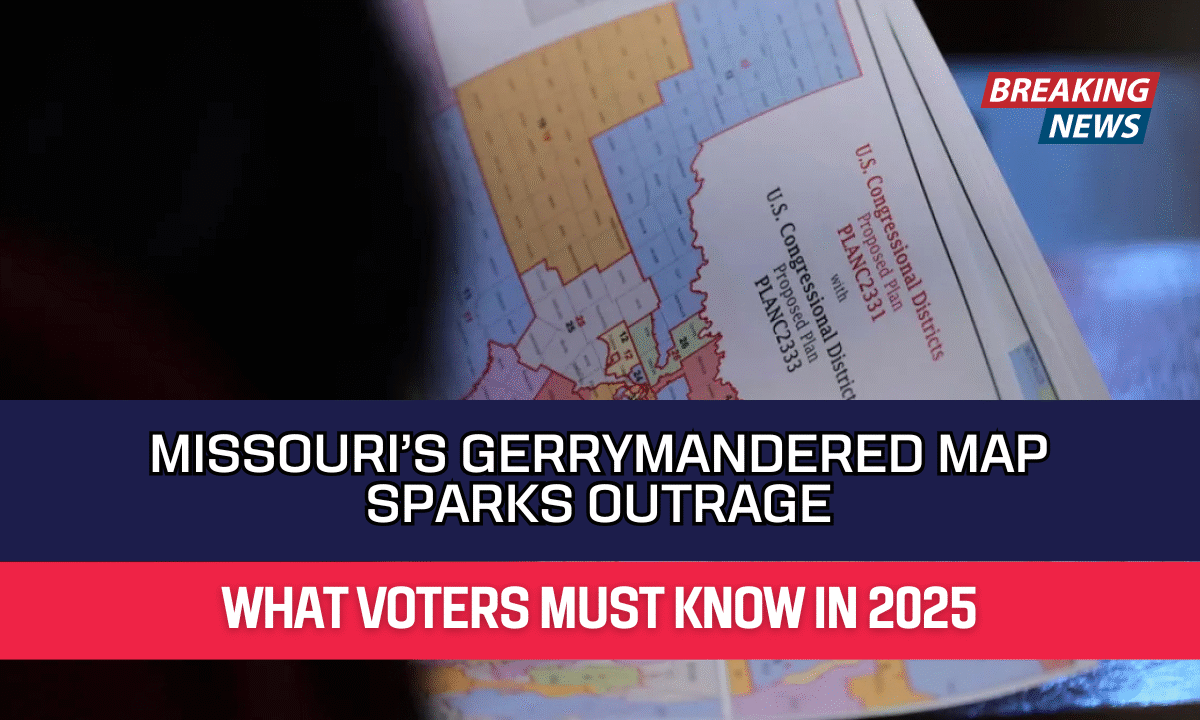Missouri politics is making headlines once again. Lawmakers have passed a new congressional map that critics call gerrymandered, along with changes that make it harder for citizens to amend the state constitution through petitions.
These moves have sparked intense debate, with some saying it’s an attempt to silence voters, while others argue it’s necessary to protect the constitution. Let’s break down what happened, what the new map means, and how it could impact the 2026 elections.
What Happened in the Missouri Senate
In September 2025, the Missouri Senate approved two major proposals:
- A new congressional map that favors Republicans.
- Limits on initiative petitions, which make it harder for voters to bring constitutional amendments to the ballot.
The vote ended after weeks of heated debate, with Republicans using their majority to push it through. Democrats strongly opposed, calling it a power grab and an attack on democracy.
The New Congressional Map Explained
Missouri has eight congressional districts, and currently, Republicans control six of them. Under the new plan:
- Kansas City (previously part of District 5) would be split into multiple districts.
- Heavily Republican areas would be merged into parts of Kansas City, weakening Democratic power.
- The result would likely give Republicans seven out of eight seats in Congress.
Missouri Congressional District Breakdown (Proposed Map)
| District | Current Party Control | Change Under New Map | Expected Outcome |
|---|---|---|---|
| 1 | Democratic | No major change | Democratic hold |
| 2 | Republican | Remains Republican | GOP hold |
| 3 | Republican | No change | GOP hold |
| 4 | Republican | Gains parts of Kansas City | GOP stronger |
| 5 | Democratic | Split, merged with GOP areas | Lean GOP |
| 6 | Republican | Gains urban sections | GOP stronger |
| 7 | Republican | No change | GOP hold |
| 8 | Republican | No change | GOP hold |
This map could reshape Missouri’s political power for the next decade, unless overturned in court or rejected by voters.
Why Democrats Oppose the Map
Democrats argue the new map is unconstitutional, since redistricting normally happens only after the U.S. Census every 10 years. A lawsuit has already been filed to block the map.
They also say splitting Kansas City is unfair, reviving old racial and political divides. State Sen. Barbara Washington called it “a betrayal of democracy,” while others accused Republicans of following Trump’s push to secure more GOP seats nationwide.
Initiative Petition Changes
The second big change involves citizen-led amendments. Missouri is one of 24 states where voters can propose laws or constitutional changes through petitions. In the past, this process led to major reforms, such as:
- Expanding Medicaid eligibility
- Legalizing recreational marijuana
- Protecting workers’ rights
But lawmakers now want to raise the bar. The new rule would require:
- A majority statewide, and
- A majority in all 8 congressional districts
This means as little as 5% of voters could block a measure supported by most Missourians. Critics argue this gives politicians more control, while supporters say it prevents “out-of-state interests” from buying constitutional changes.
The Role of the Referendum
A group called People NOT Politicians Missouri is already fighting back. They’ve filed paperwork for a referendum to let voters decide whether the map should stand. To succeed, they must collect 100,000 signatures in 90 days.
History shows that Missouri voters often reject laws passed by the legislature when given the chance. For example, in 2018, voters repealed a “right-to-work” law through a referendum.
What Happens Next
- Governor Mike Kehoe has 45 days to sign the map into law.
- If signed, the referendum campaign could place it on the 2026 ballot.
- Courts may also play a role, as lawsuits challenge the constitutionality of the map.
Meanwhile, voters will directly decide on the petition limits in 2026. The outcome could reshape how democracy works in Missouri for years to come.
The battle over Missouri’s new congressional map and petition limits is far from over. Supporters say these moves protect the constitution and strengthen GOP control, while opponents believe they weaken democracy and silence voters.
With lawsuits, referendums, and ballot fights ahead, the final decision rests with the people of Missouri. What happens in the next year could change the state’s political future for decades.




